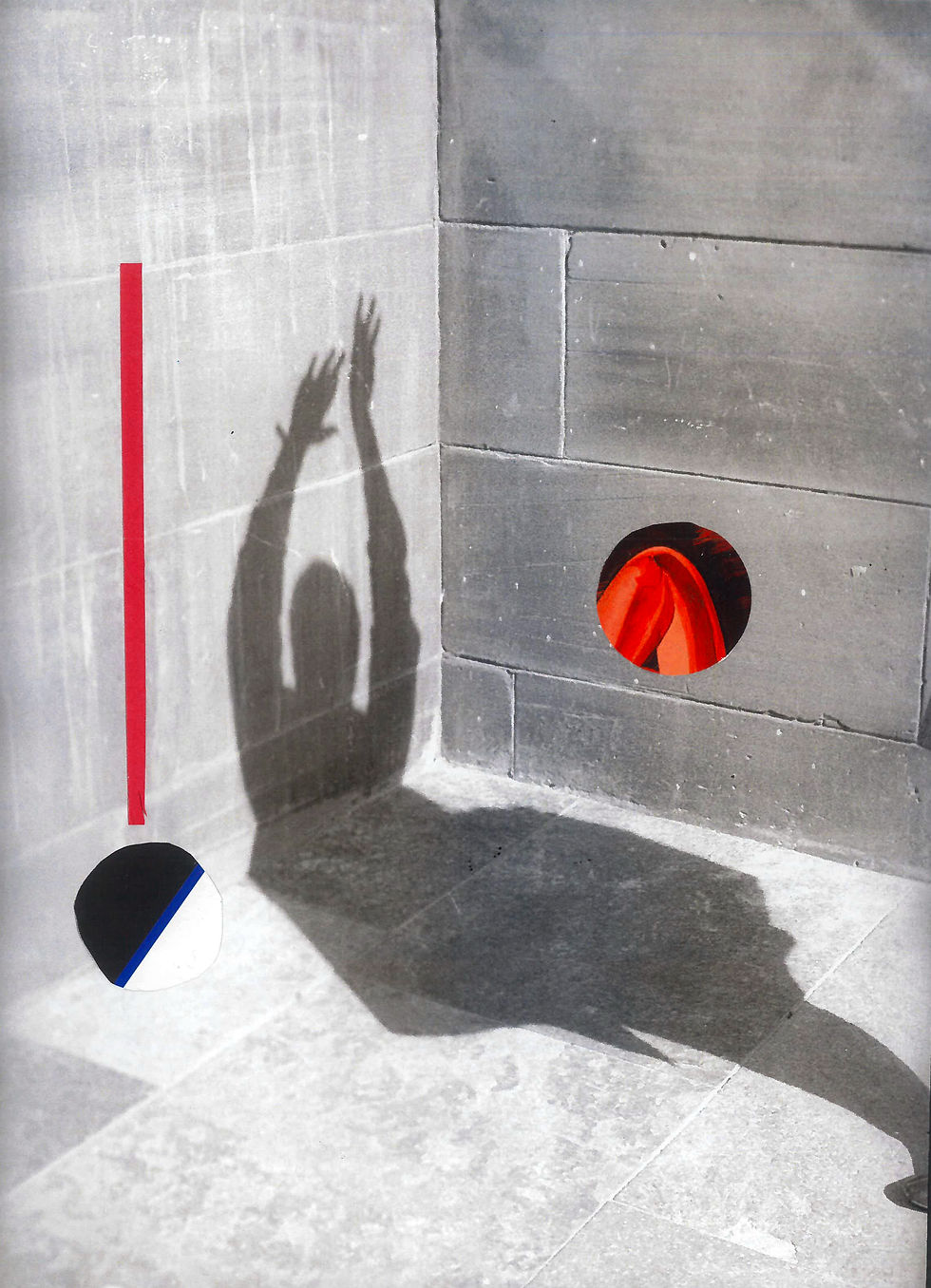Pranavi Hiremath examines the human evolutionary view of gender roles and identity, whether this is integral to our survival and if other species adopt such roles too.

Above: 'Vacancy II', 11 3/4 x 16 1/2, 2019. The image is part of a series of collages produced through play with light and shadow on film. In this silhouette still, the composition is balanced with various found and cut paper media that bring colour into the black and white film still. In direct relation to the article, the deformation of the shadow against the wall may represent the culturally constructed gender norms and roles which come to deform our true self.
Gender roles have been ingrained into our society for generations. We became slaves to this social construct from the time our parents took us to the toy store. The girls went to the pink aisle with barbies, dollhouses, kitchen sets while the boys went to the blue aisles with superheroes and cars. We also became supporters of these ideas by adhering to them and often rejecting anyone who didn't. Only recently have we been able to open our minds and recognise the flaws in this social construct of gender roles.
It is important to state the differences between the often-confused terms sex and gender or gender role. Sex depends on biology to differentiate between males and females (e.g. sex organs), while gender or gender role is described as a socially constructed and accepted behaviour of a male or a female. Humans or homo-sapiens are animals too and we have well-defined gender roles in our species, and it has helped us develop our civilisation. So, does this mean it is a vital component necessary to survive? Does this imply all other animals on this planet also have such roles?
Research shows that the answer would be not really. Gender roles are thought to be a product of culture. Culture in this context means the transfer of information from one generation to the next. A young boy and a girl aren’t brought up with the same values. A different set of values are taught to each sex. They are assigned a gender at an early age; boys are taught to earn for the family and not cry while the girls are taught to be caregivers and sensitive. This is also often why people associate higher positions like CEOs with men over women because women are thought to be emotionally-driven, while men are thought to be rational. This isn’t the case with animals, like killer whales, where females don’t learn special behaviours but all whales simply learn from each other, like strategies to kill prey. They don’t necessarily have a sex-specific cultural training that humans do.
But unfortunately, it isn’t that straightforward. Sex and gender are intertwined together and it is an on-going debate whether gender roles are biologically determined or are a product of social construct. It becomes an even more complex study once the variations in sex and gender identity are included. Human females may be considered to have more nurturing attributes as a product of childbearing. The role of carrying and caring for an infant and the father providing resources are said to be the root and evolutionary consequences of the gender roles we see today. It is presumed that sex might have been just the simplest way responsibilities could have been divided (division of labour) because the females had to stay back and look after their offspring and couldn’t go hunt at the same time. Although it is important to note that the extent to which gender is determined by biology is unclear. Since, anthropologists have found from analysing skeletal remains that even women were hunters, gatherers and they fought in battles. From about 1700 through 1900 women also served as soldiers.
It is also important to account for the variations and the spectrum of sexual identity. Gender roles and conformity to them get in the way of humans expressing their identity. In this study, it was shown that in an anti-homosexual society with rigid gender roles, a part of being a homosexual included believing that only heterosexual relationships are appropriate. Thus, it is important to include and understand that sometimes a person’s genetically assigned sex doesn’t line up with their identity: transgenders, non-binary or gender non-conforming.
Our society today goes as far as to stereotype individuals based on their sex and almost force them to adhere to the “acceptable behaviours”. These ideas have led to discrimination, inequality and sexism. There might be both socially and biologically determined factors affecting the behaviour of females and males. Culture plays a significant role. Humans have many different cultures, and gender roles are not always the same in each culture. But each human does go through cultural training and are expected to behave in a certain manner.
It is our responsibility to understand, respect each individual and their self-identity. Oppression for one means oppression for all. If women are forced into certain gender roles, men are thereby forced to fill the vacant space. Eradicating rigid gender roles and the associated inequality is vital as it prevents violence, promotes self expression and as a whole our community becomes safer and healthier. Gender equality is good for the economy as well, it is a step towards ending poverty and witnessing the full capacity of a country. Therefore, our society is capable of becoming more peaceful and successful once gender roles are eradicated.
More on what you can do:
6 Everyday Ways to Bust Gender Stereotypes:
10 ways to eliminate gender bias in the workplace:
12 steps to achieve gender equality in our lifetimes:
Further Reading:
Is gender identity unique to humans?
Harm caused by gender stereotypes:
Evolved but Not Fixed: gender roles:
Pranavi is a second year Astrophysics student at the University of Edinburgh.

Commenti